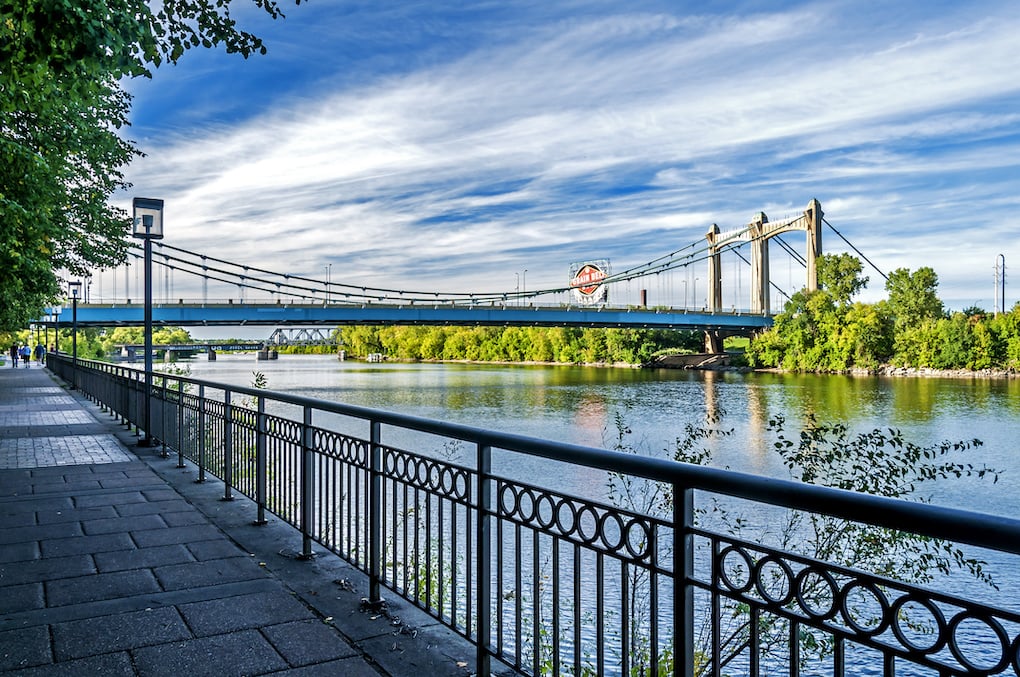Minneapolis today is one of the most vibrant, progressive, and artistically-minded cities in America. Let’s take a dip into history to see how this place went from a dinky little mill town to the urban and cultural hub of Minnesota that it is today.
Pre-History
The first European to set foot in the area was Father Louis Hennepin, who was exploring there in 1680. It was then that St. Anthony Falls got their name, however, these falls had been historically referred to as Gakaabikaang (The Falls) by the Ojibwe and Owamni Yamni (Three Whirlpools) by the Dakota. Over the next roughly 150 years, the land was claimed by various European powers until it was formally deeded to the United States as part of the Louisiana Purchase.
Fort Snelling

The first formal settlement was the establishment of Fort Snelling in 1819. The U.S. government built it at the junction of the Minnesota and Mississippi rivers and adjacent to the falls to take advantage of the waterfall’s power usefulness and to secure a western base to extend and fortify the new nation’s influence. Fort Snelling was the largest military presence in the Midwest when it was built.
Over the next 50 years, settlements grew on either side of the river. On the east bank was St Anthony, and on the west was Minneapolis.
Mind the Gap

In order to keep things neighborly, the first bridge to span the Mississippi River was erected back in 1854. The Hennepin Avenue Bridge stretched 623 feet from the western shore to Nicollette Island. It was 17 feet wide to accommodate foot and horse traffic and was initially a toll bridge, costing .05 for a person and .25 for a horse cart to cross. At the time, it was the only bridge to span across the Mississippi at any point.
1867—Thank you, Millard Fillmore
When President Fillmore ceded a bunch of land from the Fort Snelling reservation to make way for westward-bound settlers, it cleared the way for the incorporation of Minneapolis. In 1872, the town of St. Anthony was incorporated into the Minneapolis city limits, and the modern-day Minneapolis was born. So in a roundabout way, we can thank President Fillmore for giving us the city we know and love today.
Mill City
Initially, Minneapolis thrived as a mill town for processing timber and producing flour, thanks to the power generated from St. Anthony Falls. This is the reason that Minneapolis became known as “Mill City.”
Also, Minneapolis is at the confluence of the Minnesota and Mississippi rivers, making it the navigational headwaters of the Mississippi. That fact boosted its importance as a shipping hub back before railways and pavement, and things like that made river routes less vital to trade.
Flour Wars
Loggers began to slow down and the timber industry petered out, but flour production flourished and is still a big part of the Minneapolis economy, today.
The two biggest companies of the era were The Washburn-Crosby Company, later to become General Mills, and the Pillsbury Company. They were situated across the river from one another for a good part of Minneapolis’ history. You can still see the original Pillsbury sign sitting above the gorgeous Stone Arch Bridge over the Mississippi.
Throughout the late 19th and through the 20th century, these two companies vied for cupcake dominance. In 2000 General Mills bought Pillsbury. Game. Set. Match.
Today, the old General Mills factory (which burned to the ground in 1878 AND 1991) is now the Mill City Museum, which celebrates the industrial history of Minneapolis’ waterfront.

The First Mail-Order Catalog
Minneapolis is also where the Sears Roebuck company got its start back in 1866. It was the first company to utilize a shop by mail catalog, where you could buy everything from clothes to complete house building kits through the mail. Sure, while in Minneapolis, Sears was only selling watches through the mail, but still.
The Mall of America

Not only does the Minneapolis area boast the busiest mall in America, but it is also the birthplace of the first shopping mall ever, which popped up in Edina in 1956. The Southdale shopping center had 72 retail stores.
Some Fun Facts
- Minneapolis is the home to Brave New Workshop, the oldest sketch comedy theater in the nation.
- Minneapolis boasts over 5,000 acres of city parks, making it one of the best cities in the nation for enjoying, well, city parks.
- The first recorded use of the phrase “Holy Cow” in regards to a home run hit was uttered in Minneapolis.
- Born out of a political scandal, Minneapolis enacted what is known as “The Twinkie Law”.
- St Anthony Falls is the only true waterfall on the entire Mississippi.
There’s so much more to this great place, and we’d encourage you to explore more of the history and the city on your own.
Last thought: Prince rules!


